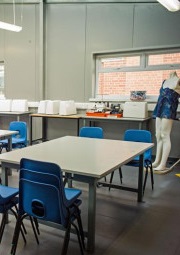Benefits of Temporary School Buildings
Many people are curious why temporary school buildings are used in so many of the nation’s schools since they were first introduced in educational institutions. Impressively, temporary school buildings are becoming more popular in local and international schools and are replacing permanent structures today.
Some people with little knowledge of temporary structures claim that the reason temporary school buildings are becoming more popular is only that they are more affordable than any permanent structure. If the cost factor is carefully considered, this might be a possible part of the explanation. However, a significant portion of the population across the country is unaware of the health advantages of temporary school buildings. You can view it now to quickly glance through them.
This article will go through the health advantages of temporary school buildings and give you more detailed information about temporary school buildings overall.
What Are Temporary School Buildings?
Temporary school buildings are structures located on a school campus that serve a variety of functions including classrooms, sports facilities, research facilities, nurseries, shelters from inclement weather, such as snow, staff offices, playgroup facilities, dining areas, lecture halls, daycare facilities, laboratories, auditoriums in higher education institutions, kindergartens, and canteens.
They could be prebuilt or constructed in just 28 days. The purpose of a temporary school building is to accommodate schools’ urgent space needs within the smallest practical time frames. They offer low labor costs, efficient time management, a long lifespan, sustainability, and minimal maintenance. The fact that temporary school buildings are unaffected by inclement weather while they are being constructed or erected is an enticing truth. This is due to the fact that the majority of them are prebuilt by the construction company.
Construction Materials for Temporary School Buildings
Temporary school buildings are typically made of materials that are durable, adaptable, and recyclable. With continued usage, the materials’ durability provides the safety typically associated with temporary school structures. These resources are adaptable and can be scaled up to meet the expanding demands of school administrators. These materials’ ability to be recycled is what makes temporary school buildings so energy efficient, high performing, environmentally friendly, and economically viable. Let’s look at them now.
Wood
Wood is a sustainable, easily workable, and flexible material. Furthermore, unlike a building built of concrete that requires a wooden support, a building made of wood does not need any support from any other sort of material. The fact that wood is an insulating material and does not carry heat or electricity is another benefit of using it. This makes it a suitable material for prioritizing safety. Wooden temporary structures also improve air quality.
Steel
Has a good strength to weight ratio and is durable, adaptable, affordable, and versatile. Steel temporary school buildings are less expensive, easier to install, and can be moved around. They are secure and safe thanks to their reasonable weight, studied design, and resistance to corrosion.
Fabrics
Fabrics are employed for temporary school buildings because of how easy they are to use and how transportable they are. They are made of strong materials and are lightweight. PVC-coated polyester is the fabric that is most frequently used to construct temporary school buildings. It can last for between 15 and 25 years.
Other materials used in temporary school buildings include bamboo, recycled plastic, timbercrete, and shipping containers.
What Are the Health Benefits of Temporary School Buildings?
A safe structure
Sometimes, temporary school buildings are first installed because of required repairs to an existing structure. Age, flooding, fire, or a failure to meet modern building code can necessitate changes. Temporary buildings exceed all safety standards and provide a safe place for students.
Sufficient air circulation
The design of temporary school buildings helps to ensure proper air circulation. The availability of oxygen is crucial for human survival as well as for pupils’ performance on academic work. The production of energy necessary to do our everyday chores successfully depends on oxygen. Additionally, the availability of energy is essential for the operation of several bodily systems, most notably the respiratory system. Everyday schoolwork demands energy for students to function at their best. The utilization of temporary school buildings ensures clean air. The pupil breathes in this air, which is used to produce energy.
Diminished greenhouse effect
Temporary school buildings are constructed using environmentally friendly elements that are crucial in minimizing the consequences of global warming. Furthermore, this structure (for instance, one constructed of wood) absorbs carbon and shields pupils from exposure to it. The spread of infectious diseases like malaria is one consequence of global warming that can affect attendance.
Prevents overcrowding
With the additional space offered by temporary school buildings, students will have the room they need to learn in a comfortable environment. Class sizes can be maintained at optimal levels and adequate social distancing can be achieved when necessary. The affordability of this solution means that other educational needs will not have to be compromised.
Conclusion
In-depth analysis of some significant health advantages is provided above. A temporary structure is perfect if you are concerned about selecting a space solution that prioritizes both the welfare of your students and the needs of your school.
Explore different ways to help underserved school kids.





 Explore the Safe Search Engine -
Explore the Safe Search Engine -